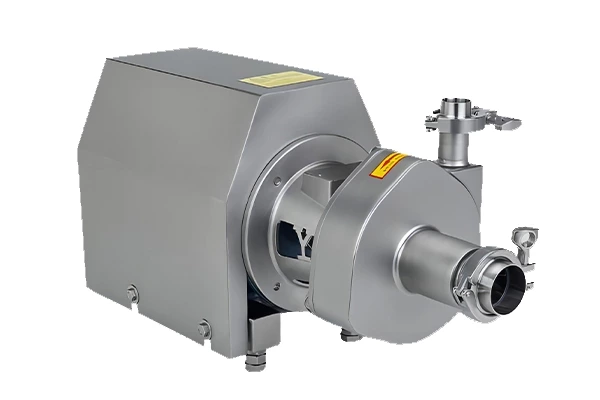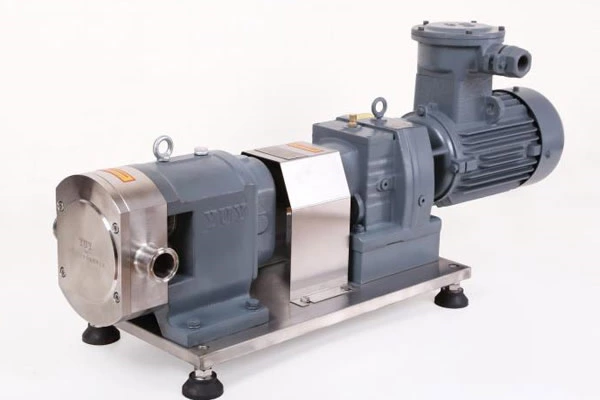Maintenance And Damage Cause Analysis Of Sanitary Centrifugal Pump
Sanitary Centrifugal Pump After a certain period of use, the parts will gradually wear out and even be damaged, resulting in reduced movement accuracy and working performance of the pump, and various abnormal phenomena such as oil pressure failure, reduced oil supply, increased noise, and increased vibration. These phenomena are often symptoms of wear or damage to sanitary centrifugal pump parts.
In daily use of sanitary centrifugal pumps, if people have the knowledge of pump installation, oil use, troubleshooting of operation, and how to perform maintenance and care, they can greatly delay the wear of sanitary centrifugal pump parts or avoid damage.
Once the parts of the sanitary centrifugal pump are worn and exceed the allowable deviation, they must be repaired and restored (or replaced) in time to restore the sanitary centrifugal pump to its proper accuracy and working performance. In some cases, skilled operators can even improve the working performance of sanitary centrifugal pumps through excellent repair and assembly skills.
Causes of damage to sanitary centrifugal pumps
There are various reasons for the damage of sanitary centrifugal pumps, but in essence, there are mainly the following two.
(I) Wear
The wear of sanitary centrifugal pump parts is the same as that of any other equipment parts, which is the inevitable result of mechanical operation. Under normal use conditions (i.e. complying with the pump's operating procedures and maintenance regulations), the wear that gradually increases due to the long-term effects of factors such as friction and chemical reactions is natural wear. This kind of wear cannot be eliminated or avoided, but through careful maintenance and correct use of the pump, the wear rate can be slowed down and the wear cycle can be extended.
The main causes and phenomena of wear are as follows:
1. Friction wear
The surface of the parts after manufacturing is always uneven when carefully observed with a magnifying glass. After the operation and wear of the sanitary centrifugal pump, the metal particles fall off the surface of the parts, and the uneven parts of the surface of the parts are relatively smoothed. If the friction continues in the future, deep marks or size reduction will occur. This kind of wear is normal and natural friction wear. It is also called abrasive wear.
2. Abrasive wear
Due to the presence of solid particulate pollutants on the mating surfaces of parts, according to the analysis of pollutants in the oil used in sanitary centrifugal pumps, more than 20% of the pollutants are silica and metal oxides. These wear are the most serious components of pump parts wear. They are sandwiched between the surfaces of the moving parts. When moving, they are equivalent to the role of grinding sand, resulting in severe abrasive wear.
3. Pit wear
This is a fatigue damage of hydraulic components. Under the action of alternating loads, residual stress and metal fatigue are generated due to periodic compression and deformation, resulting in tiny cracks on the parts, which slowly cause small pieces of stone on the surface of the parts to peel off.
4. Corrosive wear
The surface of the sanitary centrifugal pump components is eroded by corrosive substances such as acids and water in the oil, and the metal surface is gradually damaged.
The particles ground off by the above-mentioned types of wear continue to fall between the two moving parts, which will aggravate the wear of the shallow surface. According to the test, the maximum wear of the inclined plate pump occurs in the abrasive wear of 5~10μm solid particles, while the abrasive wear of 40~60 solid particles causes a significant decrease in the oil delivery of the sanitary centrifugal pump. The reason is that the latter wears the sliding surface unevenly, especially the local scratches between the oil distribution plate and the cylinder, plunger and plug. Although the friction is not large, the oil delivery of the sanitary centrifugal pump is significantly reduced. Although the former has the largest wear, the wear is uniform, and the sliding surface such as the oil distribution surface can still maintain a small gap, so the leakage is not large. Abrasive particles are malignantly worn from large to small, so the wear of large and small particles must be paid attention to at the same time, and they must be reduced and improved.
(II) Accidents
Violation of the operating procedures and maintenance regulations of the sanitary centrifugal pump, resulting in serious overload, overspeed, and even forced start of the pump even when the parts in the pump are loose and about to fall off, or when tools and other foreign objects fall into the pump during reinstallation after disassembly, etc., resulting in damage to the parts of the sanitary centrifugal pump.











